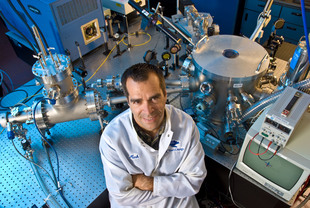Nov 24 2008
Engineers at UC San Diego's Center for Energy Research (CER) know we need to scale up successful fusion processes to produce energy in an efficient, economical, and environmentally benign way.
 Center for Energy Research (CER) Associate Director Mark Tillack
Center for Energy Research (CER) Associate Director Mark Tillack
They are working on some of the tough problems that stand in the way of efficient, economical, and environmentally friendly energy sources. Fusion research is one of the long standing focus areas at the CER, whose members also perform basic and applied research in the fields of solar energy, combustion, laser technologies and related disciplines. Housed within the Jacobs School, the CER is the second largest university-based fusion energy group in the United States.
The sun is a giant natural fusion reactor that releases massive amounts of energy when pairs of hydrogen atoms fuse to form helium. Creating and controlling the conditions that will support safe and economical generation of energy from fusion here on Earth is a major challenge, but the payoff would be astronomical: power plants with nearly unlimited fuel production capacity, no chemical byproducts, and no long-term radioactive waste.
The CER has several programs focused on next generation fusion solutions, including PISCES, which focuses on fundamental and applied experimental research in the field of boundary plasma science for fusion applications. PISCES is an example of how the CER is working on solutions for ITER, the International Thermonuclear Experimental Reactor. This joint research project between the United States, the European Union, Japan, Russia, China, and South Korea will be the first fusion experiment to produce long pulses of energy released on a significant scale.